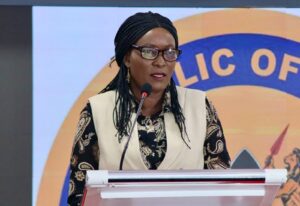Nandi Residents Benefit From Free Eye Treatment

Over 800 eye patients from across Nandi County received free treatment during the World Eye Sight Day commemoration organized by the County Government of Nandi in collaboration with Operation Eyesight Universal.
The residents received free eye checkups, medicines and cataract surgeries during the three day event at Kaptumo Sub County Hospital in Aldai Sub County.
Florah Kiplagat a cataract surgeon based at the Kapsabet County Referral Hospital said the check-up was aimed at reaching out to residents with eye problems who do not visit hospitals due to poverty and for fear of cost implications, to ensure they live a healthy life.
“We saw it wise to commemorate this year’s World Sight Day at Kaptumo Sub County Hospital to alleviate the burden that our people go through while seeking eye treatment and as we unveil our Ophthalmology officer who will be stationed at the facility,” she said.
Mzee Paul Kosgei whose eyes itch when it is sunny, is among those who benefited from the free treatment.
“I would not have known it was an allergy had I not visited the free eye check up. Our people should not assume anything but take advantage of such free check-ups,” she said.
Nancy Kilach who is among the patients that were operated appreciated efforts by the County Government of Nandi to provide eye care services.
“Am very hopeful that i’ll be able to see clearly and undertake my normal duties without support from other people after the surgery” she said, disclosing that as an ICT Officer it was a difficult task for her to work based on the eye problem.
Residents aged between 40 and 50 years were advised to seek regular check-ups to ensure any detectable complication is treated as early as possible.
Florah Kiplagat said the programme will be undertaken through outreaches to ensure as many residents as possible benefit.
It is estimated that 250,000 people in Kenya are blind with another 750,000 suffering low vision, putting the prevalence of blindness in the country at 0.7%. Cataract is the leading cause of blindness accounting for 43% of the total cases. Trachoma is second accounting for 19% followed by glaucoma and childhood blindness accounting for 9% and 6% respectively.
According to the National Strategic Plan for Eye Health and Blindness Prevention 2012-2018 prepared by the Ministry of Health, over 80% of the cases are due to curable and preventable causes. Lack of access to treatment means that many Kenyans continue to suffer in silence especially in the rural areas where health services are inadequate or inaccessible.





